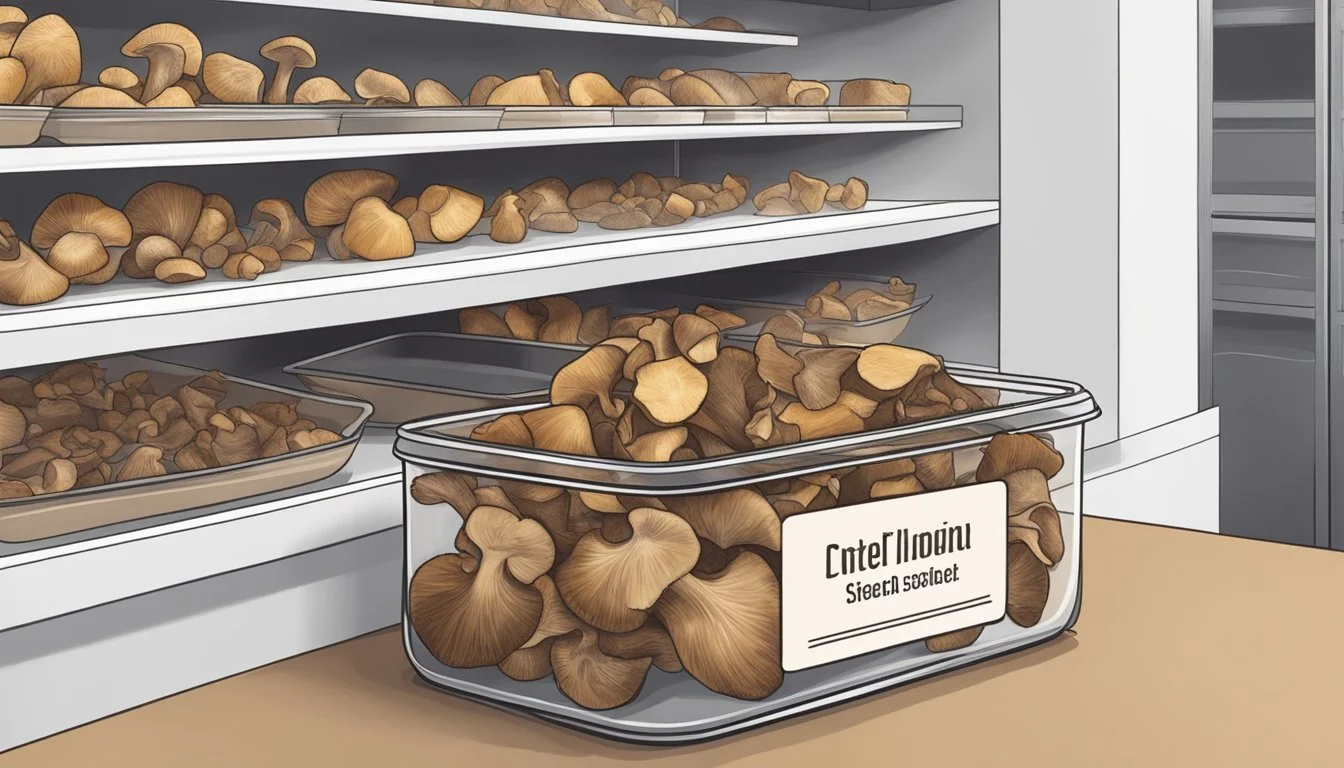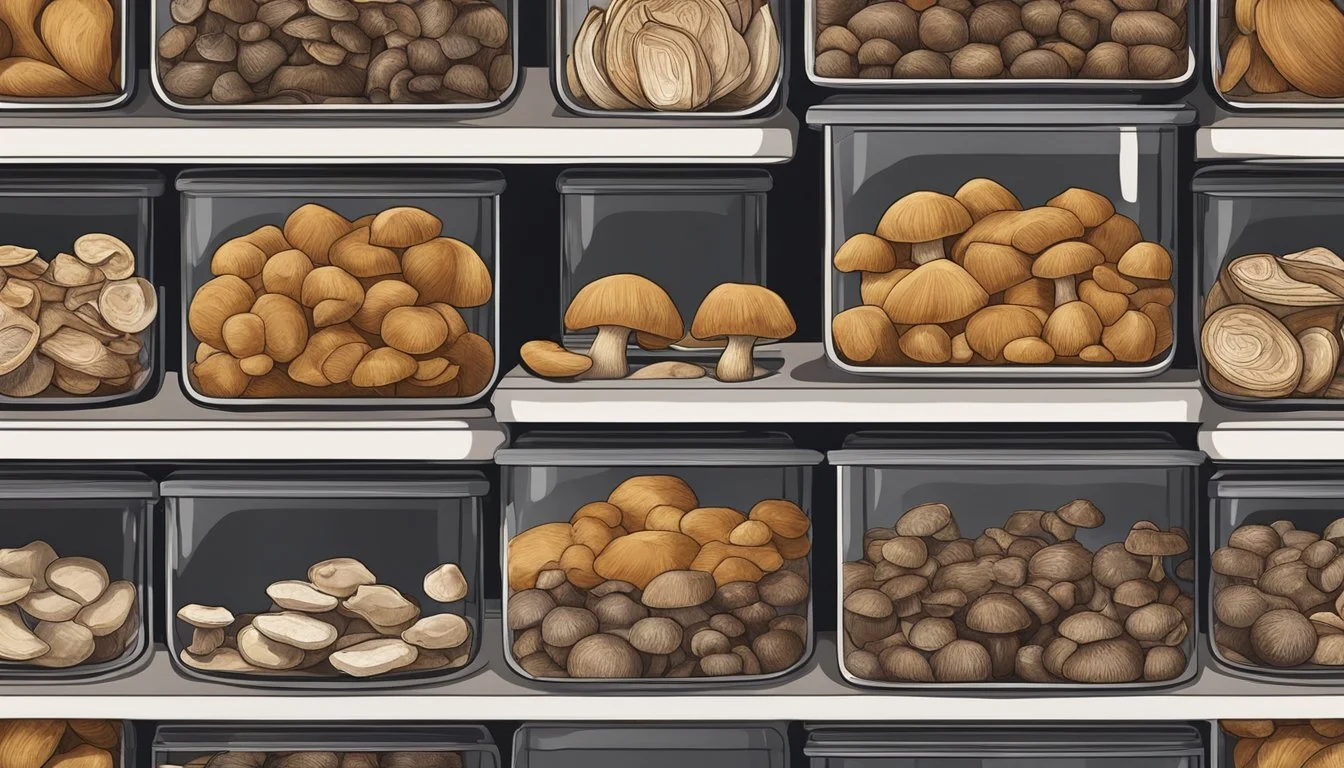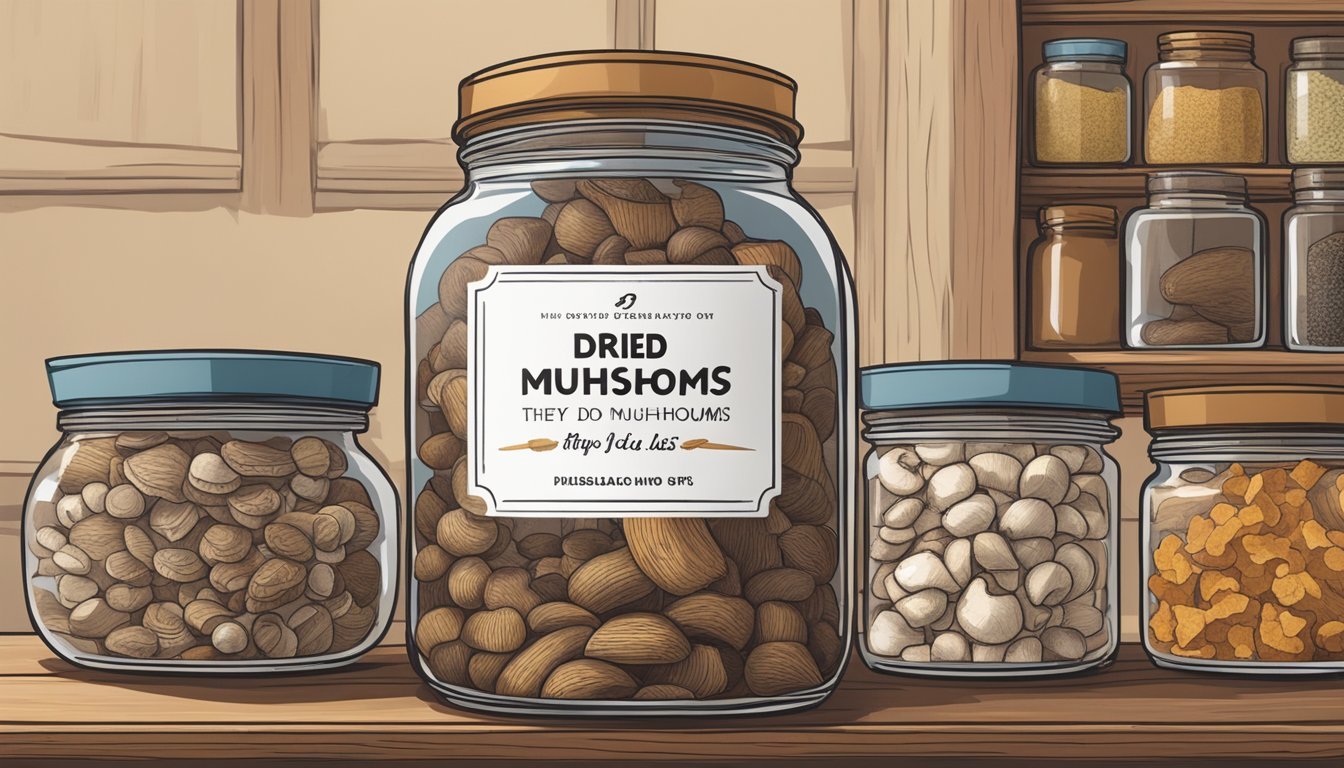How Long Do Dried Porcini Mushrooms Last?
Shelf Life and Storage Tips
Dried porcini mushrooms (What wine goes well with mushrooms?) are renowned for their shelf life, offering a convenient and long-lasting alternative to fresh mushrooms. Their robust flavor and versatility in culinary applications make them a staple in many kitchens. When stored properly in a cool, dry place, dried porcini mushrooms can last up to two years. This impressive longevity is owed to the dehydration process, which removes moisture and inhibits the growth of microorganisms that typically lead to spoilage.
The key to maximizing the shelf life of dried porcini mushrooms lies in proper storage conditions. Ideally, they should be kept in an airtight container to prevent the re-absorption of moisture and to maintain their quality. Even though refrigeration is not a necessary measure for preserving dried porcini mushrooms, some prefer storing them in the refrigerator or freezer to further extend their shelf life and protect against potential quality degradation.
As with many dried foods, the environment plays a critical role in the preservation of dried porcini mushrooms. Ensuring that they are stored in an environment free from drastic temperature changes, high humidity, and direct sunlight will contribute to their longevity. Regularly checking the mushrooms for changes in appearance or aroma can also help determine their continued suitability for use, ensuring that their rich, earthy flavor is preserved for culinary use whenever needed.
Understanding Dried Porcini Mushrooms
Dried porcini mushrooms are a culinary staple famed for their rich flavor profile and nutritional benefits, offering a formidable plant-based protein source.
What Are Porcini Mushrooms?
Porcini mushrooms, also known as Boletus edulis, are a highly regarded variety of wild edible mushrooms. They possess a distinct umami flavor, which is a savory taste enriched by their natural glutamates. These mushrooms are not only cherished for their earthy and umami flavors but also for their versatility in cooking. When fresh, porcini have a fleshy, dense texture, making them an excellent meat substitute for vegan and vegetarian diets.
Benefits of Porcini Mushrooms
Nutritional Value: Porcini mushrooms are a powerhouse of nutrition. They provide a substantial amount of protein, which is vital for muscle repair and growth. Additionally, they are a source of dietary fiber, supporting digestive health. Dried porcini are nutrient-dense, containing a variety of minerals such as potassium, iron, and phosphorus, along with essential vitamins which contribute to overall well-being.
Antioxidant Properties: Porcini mushrooms are abundant in antioxidants. These compounds help combat oxidative stress and may play a role in preventing certain diseases. The antioxidants also contribute to the rich, deep flavors that porcini mushrooms are known for.
In summary, dried porcini mushrooms are celebrated for their taste and nutritional value, offering an array of health benefits while serving as a prominent feature in numerous culinary dishes across various cultures.
Storing Dried Porcini Mushrooms
Proper storage is essential for maintaining the quality and extending the shelf life of dried porcini mushrooms. They must be kept in conditions that minimize exposure to light, moisture, and fluctuations in temperature.
Optimal Storage Conditions
Dried porcini mushrooms last the longest when stored in a cool, dark place with minimal humidity. They should be kept in an airtight container to prevent absorption of moisture from the air.
Temperature: Ideally, the mushrooms should be stored at room temperature.
Light: A dark place protects them from light, which can degrade their quality.
Moisture: It is critical to avoid any moisture, which can lead to spoilage.
Storing in the Pantry
A pantry or cupboard provides an excellent environment for storing dried porcini mushrooms as long as it is not exposed to frequent temperature changes.
Container: Place the mushrooms in a glass jar or vacuum-sealed bags to protect them from air and moisture.
Location: Choose a cool, dark place in the pantry away from direct sunlight.
Storing in the Refrigerator or Freezer
For longer-term storage, dried porcini mushrooms can be refrigerated or frozen. This can extend their shelf life significantly.
Refrigerator: Seal mushrooms in an airtight container, possibly with paper towels to absorb any excess moisture.
Freezer: Use a plastic bag or container suitable for freezing. Keeping them at a constant freezing temperature preserves the mushrooms for several months to a couple of years.
Maximizing Shelf Life
When it comes to dried porcini mushrooms, ensuring maximum shelf life revolves around proper drying techniques and an understanding of the factors that affect their longevity. One must employ both to prevent spoilage and preserve the mushrooms' quality.
Drying Techniques to Preserve Quality
Drying is a critical step in preserving porcini mushrooms. Utilizing low, consistent heat allows for thorough dehydration without cooking the mushrooms. Mushrooms should be:
Cleaned: Wipe off any dirt with a brush or dry cloth.
Sliced: Pieces should be even in thickness to dry uniformly.
Spread: Lay out on a drying rack without overlapping to promote air circulation.
Temperature: Use an oven, dehydrator, or air-dry, ensuring the temperature is low (between 110°F - 140°F) to keep the mushrooms' structural integrity.
Factors Affecting Shelf Life
Multiple factors influence the shelf life of dried porcini mushrooms:
Storage: Mushrooms must be stored in an airtight container to protect from moisture and pests.
Environment: A cool, dry place away from direct sunlight is ideal, as exposure to heat and light can degrade quality.
Humidity: In areas with high humidity, it might be beneficial to include a desiccant packet in the storage container.
Use: For longest shelf life, limit how frequently the container is opened to reduce exposure to air and humidity.
Properly dried and stored, porcini mushrooms last for up to a year, keeping their flavor and texture intact. The key is to minimize their exposure to elements that hasten spoilage.
Recognizing Spoilage
When it comes to dried porcini mushrooms, it's crucial to identify spoilage to ensure food safety and prevent health risks. One must inspect their dried mushrooms regularly for any signs of spoilage, like changes in odor, color, or texture.
Signs of Spoilage
Odor: A fresh, earthy smell is typical, whereas an off or foul odor suggests spoilage.
Color: Look for any discolorations or the presence of mold, which often appears as white, green, or black fuzzy spots.
Texture: Dried porcini should be somewhat leathery but not damp or slimy; any change could indicate spoilage.
If one or more of these signs are present, it is best to discard the mushrooms to avoid potential health risks.
Food Safety Precautions
Storage: Keep dried porcini in a cool, dry place away from moisture to prevent the growth of mold and bacteria.
Handling: Always handle food with clean hands and utensils to avoid contamination.
Use-by Date: Adhere to the expiration date on the packaging, if available.
Following these food safety measures can help reduce the risk of consuming spoiled goods and ensure that the dried porcini mushrooms remain a safe and tasty addition to various recipes.
Using Dried Porcini Mushrooms in Cooking
Dried porcini mushrooms, renowned for their concentrated flavor, are a staple in various dishes, from soups and stews to pasta sauces. These mushrooms require rehydration before cooking to maximize their culinary potential.
Rehydrating Porcini Mushrooms
Before incorporating porcini mushrooms into recipes, it is crucial to rehydrate them. This process involves soaking the mushrooms in warm water for about 20-30 minutes. They should become plump and tender, regaining much of their original texture. The water used for rehydrating mushrooms is often infused with the mushrooms’ earthy flavors (What wine goes well with earthy flavors?) and can be reserved. It makes an excellent addition to dishes, imbuing them with a deeper umami essence.
Incorporating into Recipes
Once rehydrated, porcini mushrooms are ready for use in an array of recipes. For pasta sauces or risottos, chop the mushrooms and sauté them with a base of onions or garlic to fully release their aroma. In soups and stews, add the mushrooms directly, allowing them to simmer and permeate the dish with their hearty flavor. Porcini mushrooms are not only limited to traditional uses; they can also enhance stir-fries and other innovative dishes that benefit from their distinctive taste.
Purchasing and Handling
In the purchase and handling of dried porcini mushrooms, the focus is on selecting the highest quality product and ensuring proper preparation to maintain their distinct earthy flavor.
Choosing Quality Dried Porcini
When buying dried porcini mushrooms, one should look for slices that are uniform in color and free from any visible signs of grit, dirt, or debris. It is important to inspect the packaging for any evidence of bugs or worms, which can be common in lesser quality products. Quality dried porcinis should have an earthy, robust aroma and not smell musty or off.
Proper Handling and Preparation
Once purchased, proper handling is vital. Dried porcini mushrooms should be stored in a cool, dry place to prevent moisture from compromising their quality. Prior to cooking, cleaning the mushrooms is crucial to remove any residual dirt. This can be done by lightly brushing them off or rinsing them quickly, being careful not to soak them as they can absorb water. Preparing dried porcini typically involves rehydrating them in warm water, which also allows one to identify and remove any remaining debris that may have been missed.
FAQs on Dried Porcini Mushrooms
When considering dried porcini mushrooms, it's important to understand their shelf life and how they compare to other dried varieties in terms of longevity.
Shelf Life and Expiration Dates
Dried porcini mushrooms are renowned for their ability to last longer than fresh mushrooms. Under optimal storage conditions—cool, dry, and away from direct sunlight—they can maintain quality for up to one year. After this period, they may not be unsafe to eat but could lose flavor and texture. It's essential to check for any signs of spoilage, such as a musty smell or the presence of mold, as these indicate that the mushrooms are no longer good to consume.
For those who prefer to turn their dried porcini into mushroom powder (how long does mushroom powder last?), the powder form can also last up to a year if kept in an airtight container. The expiration date of dried mushrooms and mushroom powder should be adhered to, ensuring optimal taste and quality.
Comparing with Other Dried Mushrooms
Dried porcini mushrooms are compared often to other popular types like shiitake, morel, and chanterelle regarding shelf life. Here is a brief comparison:
Shiitake Mushrooms: Similar to porcinis, dried shiitakes can last up to a year when stored correctly.
Morel and Chanterelle: These delicate wild mushrooms, when dried, can also have a shelf life close to a year but may need extra care to prevent aroma loss.
General Wild Mushrooms: Various wild mushrooms have different shelf lives; however, most can be expected to last several months up to a year when dried and stored properly.
To conclude, while all these dried mushrooms share a long shelf life, it's important to note that the environment they are stored in plays a critical role in preserving their quality. Dampness and heat are detrimental to their longevity, so proper storage is key.








